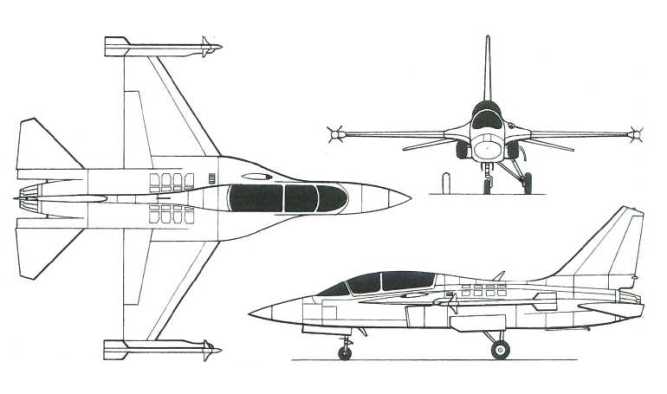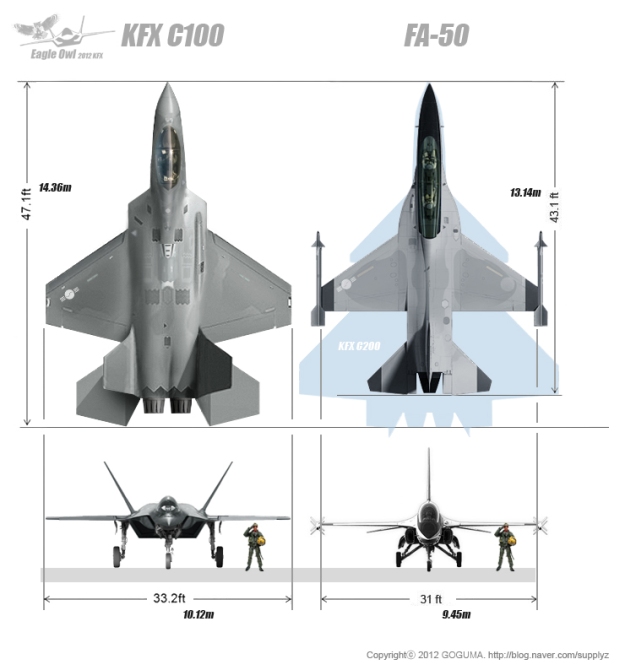The latest version of the Sukhoi Su-35, Su-35BM (bolshaya modernizatsiya – big modernisation), is an advanced capability multirole air superiority fighter developed from the Su-27. The aircraft has high manoeuvrability (+9g) with a high angle of attack, and is equipped with high-capability weapon systems that contribute to the new aircraft’s exceptional dogfighting capability. The maximum level speed is 2,390km/h or Mach 2.25.
Su-27 Flanker
The Su-27 was developed primarily for Russia’s air-defense interceptor forces. Work on the T-10 design that led to the Su-27 began in 1969. The requirement was for a highly maneuverable fighter with very long range, heavy armament and modern sensors, capable of meeting the F-15 on equal terms.
The first prototype T-10 Flanker-A flew in 1977. The early flight development programme revealed serious problems that led to a total redesign; the resulting T-10S-1 flew in 1981. The single-seat Su-27 Flanker-B eventually entered operational service in 1985 and despite its age remains a formidable interceptor.
Its heavy armament of up to 10 air-to-air missiles gives excellent combat persistence; outstanding maneuverability, coupled with a helmet sight to cue agile R-73 missiles also make it a potent close combat fighter, and its large internal fuel capacity confers a very long range that allows the Su-27 to escort Su-24 interdictors.
All operators also use Su-27UB Flanker-C two-seat trainers. This retains full combat capability and has been developed further.
The Su-27K is a naval fighter variant that has the Russian naval aviation service designation Su-33 (Flanker-D). A total of 24 production aircraft has been built to date; the type made its first deployment on carrier Kuznetsov in 1995.
The Su-30 is a two-sear multi-role fighter. This aircraft is fitted with new avionics and has an added ground attack capability. It made its first flight in 1986. The Su-30 has been exported to a number of countries.
| Entered service | 1985 |
| Crew | 1 men |
| Dimensions and weight | |
| Length | 21.94 m |
| Wing span | 14.7 m |
| Height | 5.93 m |
| Weight (empty) | 17.7 t |
| Weight (maximum take off) | 33 t |
| Engines and performance | |
| Engines | 2 x NPO Saturn AL-31F turbofans |
| Traction (dry / with afterburning) | 2 x 79.4 / 122.6 kN |
| Maximum speed | 2 280 km/h |
| Service ceiling | 17.7 km |
| Range | 3 680 km |
| Armament | |
| Cannon | 1 x 30-mm cannon with 150 rounds |
| Missiles | 6 x R-27 (AA-10 ‘Alamo’) and 4 x R-73 (AA-11 ‘Archer’) air-to-air missiles |
Su-27 data military-today.com
Su-33 Flanker-D: Details
Su-30SM: Details
Su-30MKI: Details
The Su-35BM was unveiled at the Aerosalon MAKS air show in Moscow in August 2007 and its first flight was in February 2008. The SU-35BM entered into serial production as the Su-35S for the Russian Air Force in 2010.
The aircraft was developed, tested and introduced into serial production by the Sukhoi Design Bureau, based in Moscow, and manufactured by KNAPPO of Komsomolsk-on-Amur. Both companies are part of the Sukhoi Aviation Holding Joint Stock Company.

The Russian Air Force ordered 48 Sukhoi Su-35S jets in August 2009 with deliveries scheduled to run until 2015. Sukhoi began producing the components required for assembly of the aircraft in November 2009. An information management system integrated with onboard subsystems and a new phased array radar system with long-range aerial target detection have been installed in the aircraft, which is currently undergoing preliminary testing.

TASS
The first Su-35S aircraft was handed over to the 929th State Flight Test Centre (GLITS) for flight tests in August 2011. The Russian Ministry of Defence received six Su-35S production aircraft from Sukhoi in December 2012.
Nozzle Assembly of the GPT -2E series

Nozzle assemblies of the GPT-2E (-1, -1M, -1I) type are designed to refuel combat aircraft in flight. The nozzle assemblies feature universal refueling couplings that conform both to the RF and NATO standards. This makes it possible to refuel the aircraft from the tankers equipped with the aerial-refueling pods of both domestic and foreign production.
Components:
- Refueling coupling;
- Engagement warning system;
- Pneumatic drive to open refueling valves of the nozzle assembly/refueling pod drogue;
- Output fuel pressure regulator;
- Structural fuse of the refueling coupling;
- Emergency retraction system for the refueling coupling.
Specifications:
- Maximum refueling rate is up to 2500 l/min.
Year of development: 2006
Application:
MiG-29E, MiG-29МST, MiG-29К/КUB, Su-24, Su-30MKI and Su-35.
Source zvezda-npp.ru
Another batch of Su-35S will enter service with Russian Aerospace Force in late 2017: Here
Excerpt
MOSCOW, May 30. /TASS/. The Russian Aerospace Force is expected to complete the trials and take state-of-the-art Su-35S plane into service in late 2017, Russian Deputy Defense Minister Yuri Borisov said on Tuesday.
Russian Aerospace Force Su-35S inventory: Here
Russia to upgrade Su-35C fighter
Sukhoi Su-35C will be upgraded in 2017 based on the experience from the combat use in Syria
KOMSOMOLSK-ON-AMUR, June 5. /TASS/. Sukhoi Su-35C (NATO reporting name: Flanker-E) will be upgraded in 2017 based on the experience from the combat use in Syria, Deputy Defense Minister Yuri Borisov said on Monday.
“This year’s aircraft will be upgraded based on all the drawbacks and the Syrian experience,” he said during a visit to the Gagarin aircraft plant in Komsomolsk-on-Amur.
The deputy defense minister said at first the plane “inhaled” small stones from the runway, it had problems with the light, screens. But during the combat use these drawbacks were fixed. The ministry contracted ten aircraft annually, which the plant will supply to 2020.
“Our pilots, who serve in Syria, say it is one of the best aircraft in the world in the flight-technical characteristics, the nomenclature and the range of weapons,” he said. “They believe the aircraft cannot be compared in combat use with any other plane, and thus foreign clients have been considering this aircraft.”. Source tass.com
Su-35 Flanker-E cockpit
 DarthWelder Channel
DarthWelder Channel
The cockpit has a central control column and is fitted with a Zvesda K-36D-3.5E zero-zero ejection seat which allows the pilot to eject at zero speed and at zero altitude. *Note the correct seat model is K-36D-5
Ejection Seat К-36D-5
Design description:
In flight, a crewmember is held in the seat with a suspension/restraint harness system. The crewmember may be restrained in the seat with the shoulder and waist restraint mechanisms. The seat features stepless height adjustment, which makes the seat occupation comfortable for work and vision.
The crewmember protection against the dynamic pressure G-loads at ejection is provided with the protective gear, windblast shield, forced restraint in the seat, seat stabilization as well as the selection of one of three operation modes for the energy source depending on the suited pilot mass. At the aircraft speed exceeding 850 km/h, the MRM steady-state mode is adjusted by the automatics depending on the acceleration.
After automatic separation of the pilot from the seat, the recovery parachute canopy is inflated providing the pilot’s safe descent. A portable survival kit, which is separated from the seat together with the pilot, supports his/her vital functions after landing or water landing, makes the pilot search easier, and the PSN-1 life raft supports the pilot floatation on the surface of water.
In comparison with the К-36D-3,5 seat, the К-36D-5 ejection seat has improved operating characteristics:
- increased range of operating temperatures;
- increased range of flight personnel anthropometry;
- improved characteristics regarding minimal safe-ejection altitudes without on-board flight data;
- electric heating on the seat bottom and back.
Specifications:
The К-36D-5 ejection seat realizes the crewmember emergency escape within the range of equivalent airspeed (VE.) from 0 to 1300 km/h, at Mach number up to 2.5 and aircraft flight altitude from 0 to 20,000 m, including takeoff, landing run and «Н=0, V=0» mode. The seat is used with the KKO-15 set of protective gear and oxygen equipment.
Seat installation mass does not exceed 100 kg, including the survival kit.
Year of development: 2013
Application:
T-50 and Su-35S aircraft
Source zvezda-npp.ru
Oxygen System KS – 129
Purpose:
The KS -129 oxygen system is designed to provide one or two pilots of the front-line aircraft with oxygen during flights at the altitudes up to 20 km. (KS -130 oxygen system is used at the altitudes up to 12 km). The oxygen source is the BKDU -130 onboard oxygen-generating system, which produces oxygen from compressed air tapped from the aircraft gas turbine compressor.
Major advantages of the bottle-free oxygen system:
- There are no onboard oxygen bottles in the system and, correspondingly, there is no need in pre-flight charging of the system with oxygen;
- The mission duration is not limited with the onboard oxygen reserve;
- The system features less line maintenance man-hours than the system with the bottle oxygen source.
The KS-129 oxygen system is used onboard the MiG-29K (KUB), MiG-29UPG, MiG-35, Su-30МКМ, Su-30МКI(A), Su-35, etc. Source zvezda-npp.ru
The aircraft has a quadruplex, digital fly-by-wire control developed by the Avionika Moscow Research and Production Complex JSC (MNPK Avionika).
The cockpit is fitted with two 230mmx305mm high-resolution MFI-35 liquid crystal displays with a multifunction control panel and a IKSh-1M head up display with a wide 20°x30° field of view.
2 x 230mm x 305mm high-resolution MFI-35 liquid crystal displays
 Two 230mmx305mm high-resolution MFI-35 liquid crystal displays with a multifunction control panel
Two 230mmx305mm high-resolution MFI-35 liquid crystal displays with a multifunction control panel
IKSh-1M head up display
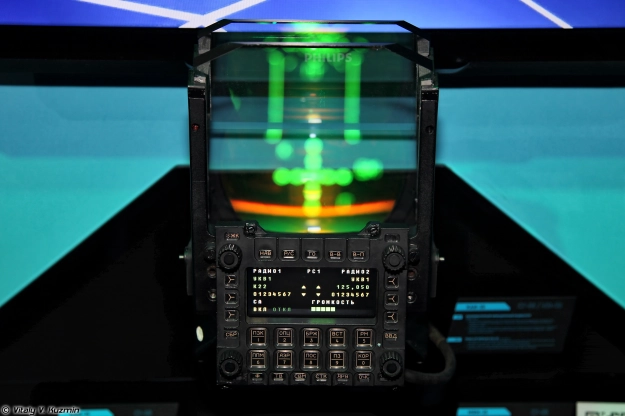 IKSh-1M head up display with a wide 20°x30° field of view
IKSh-1M head up display with a wide 20°x30° field of view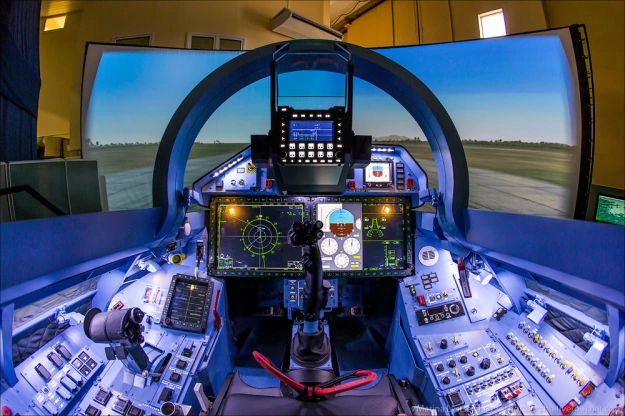


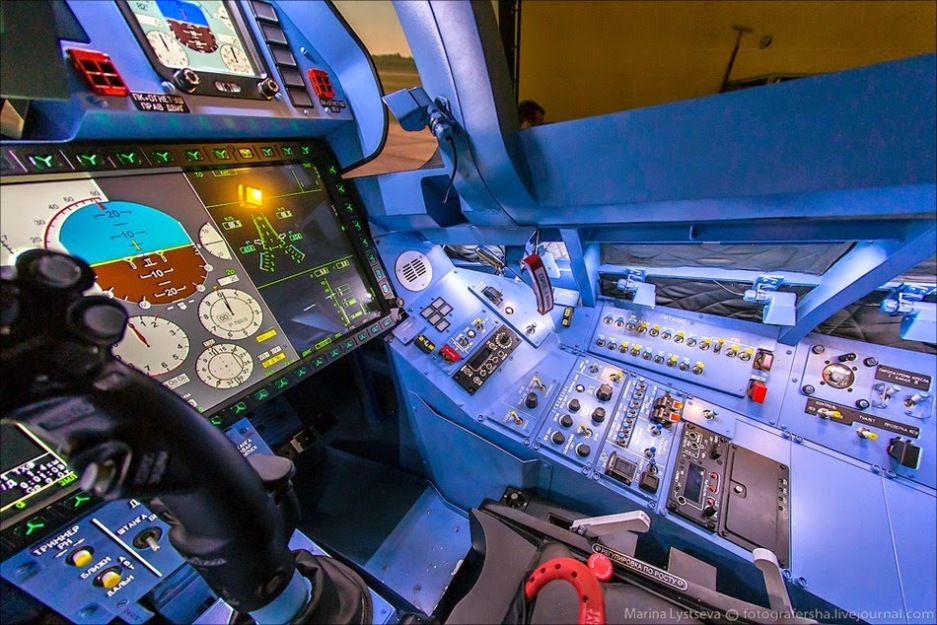
Su -35 Cockpit Details
- Multi-function display MFD-35 with a diagonal of 15 inches. With push-frame pilot can divide the display into several parts and output them all the necessary information about the flight mission, navigation, weapons and technical condition of the aircraft. Purpose multifunction buttons varies depending on the nature of the displayed information, appropriate hints are displayed next to the buttons.
- The line of CCD control modes (complex avionics). There are only five of the CCD mode: short-range and long-range combat in the air, near and far fight on the ground, plus the navigation mode. Each mode provides a specific set of information displayed on the display, and the preset selection of weapons. The pilot selects the CCD right thumb mode and thus has access to virtually all the functions of the aircraft, without taking your hands off the controls.
- An integrated system of backup devices (PSOE) – a minimum set of essential equipment, such as the altimeter and attitude indicator to help the pilot to return to the home airfield in the event of failure of the main avionics. Earlier, the PSOE was carried out in the form of switch devices (pilots called them “alarms”), now it has its own multi-function display with battery.
- Multi-function IR-LED with a working field of 4 x 5-inch frame and push-button is used to configure all aircraft systems, including radar sighting and navigation equipment, weapons, video recording system.
- collimator aviation indicator and remote control display. It appears as a basic flight information, including altitude, speed, attitude indicator, heading and current selection of weapons, as well as any other necessary pilot at the moment.
- The control unit and automatic traction control system. Lets without the pilot to maintain the set speed in all maneuvers and in all conditions, or fully automatically maintain the aircraft on the route in accordance with the flight plan. In this pilot task is only to carry out take-off and landing, as well as the decision on the use of weapons.
Centre stick
- The automatic control system off button (ACS). Also under the little finger of the pilot is the lever to temporarily disable the automatic control: moving on autopilot, the pilot presses the lever and manually perform the maneuver, after which ACS continues to lead the aircraft at the new rate.
- The four-CCD mode switch to select the modes of combat and navigation complex avionics.
- To bring the key to the horizon. In case of loss of orientation in space, including if you feel unwell due to overload, the pilot can press this button to automatically return to the plane rectilinear motion with zero roll and pitch.
- The firing button for cannon armament. Rockets run the trigger.
- The switch “maneuver – trajectory control.” Translates the plane in supermaneuverability mode.
- Joystick (joystick) control marker is responsible for the cursor position on the screen.
Motor Control Levers
- The four-surveillance-attack system control switch. It is concentrated to 14 different functions.
- Enter the command.
- Radio – one switch controls with two radios.
- Enter – button to lock the pilot action (reaffirmation of choice).
- The choice of weapons. Each battle mode of the CCD corresponds to a standard set of weapons, but the pilot may at any time on their own to clarify its choice.
Source “Theatre of the pilot,” published in “Popular Mechanics” magazine ( №133, November 2013 ).
The pilot has two VHF/UHF encrypted radio communications systems and a jam-resistant military data link system between squadron aircraft and between the aircraft and ground control. The navigation system is based on a digital map display with a strapdown inertial navigation system and global positioning system.
HMD Helmet
Su-27 based fighter construction
Compared to the Su-27 design from which it is derived, the front fuselage diameter of the Su-35 has been increased to accommodate the larger 900mm-diameter antenna of the Irbis-E radar.
High-strength, low-weight, composite materials have been used for non-structural items such as the radomes, nose wheel, door and leading-edge flaps. Some of the fuselage structures are of carbon fibre and aluminium lithium alloy.
Weapons
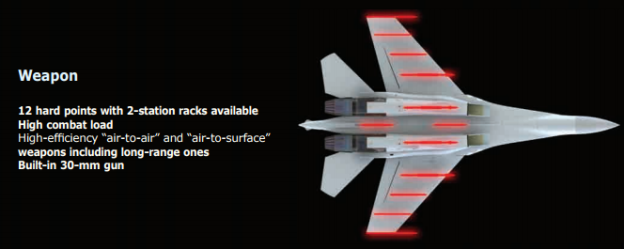
The aircraft has 12 hardpoints for carrying external weapons and stores.
Each wing has four hardpoints – one on the wingtip and three under-wing stations. There are two hardpoints on the underside of the fuselage on the centreline and one under each engine.
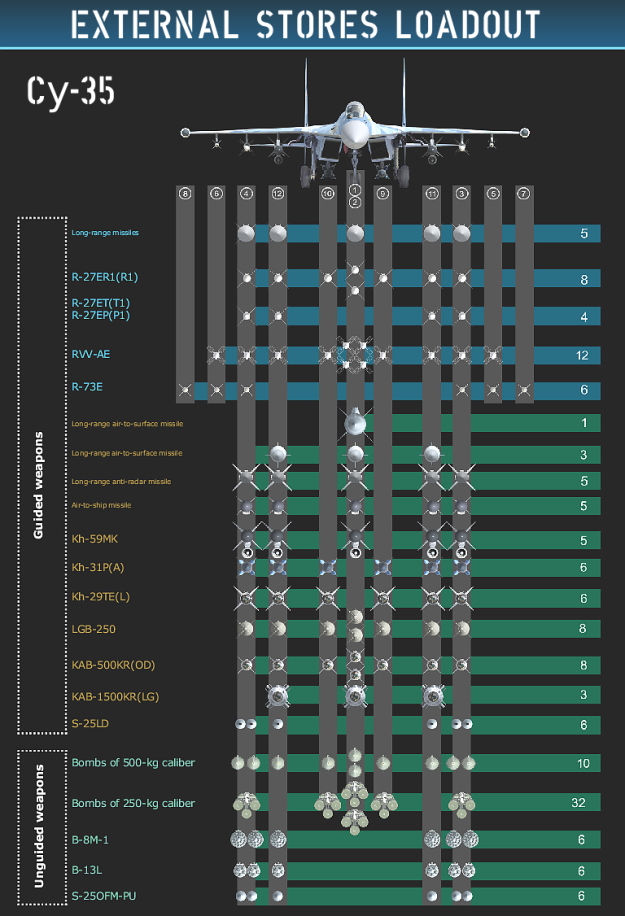
Missiles
The aircraft’s air-to-air missiles can include the Vympel R-27 (Nato designation AA-10 Alamo), the Vympel radar-guided medium-range R-77 (AA-12 Adder) and the Vympel short-range infrared-guided R-73E (AA-11 Archer).
R-27 (NATO reporting name: AA-10 Alamo)
Medium-range missiles R-27 (e), designed to intercept and destroy aircraft and helicopters of all types of unmanned aerial vehicles and cruise missiles in a dogfight at medium and long distances, with individual and group actions carrier aircraft, day and night, in simple and adverse weather conditions, from any direction, against the background of the earth and the sea, with active information, firing and maneuvering countering enemy.
Available in several versions, differing use of two types of homing – semi-active radar (PARGS) and heat – and two types of propulsion systems – with standard and increased installed power. Modifications PARGS are designated R-27R and R-27ER, with TGS – R-27T, R-27ET, with propulsion of increased energy available – R-27ER and R-27ET.
Main material rocket design titanium alloy, a steel motor housing .
For the suspension to the carrier aircraft and launch weight of both modifications missiles used the same launchers rail and catapult type.
he rail trigger APU-470 is used for the deployment of missiles under the wings of the aircraft, and the ejection device AKU-470 for the deployment of missiles under the fuselage and under the wings.
 Image: artem.ua
Image: artem.ua
Data airwar.ru & artem.ua
R-27R1 missile


R-27ER1 missile


R-27T1 missile


R-27ET1 missile


Source artem.ua
R-77 extended medium range air-to-air missile
The R-77, RVV-AE designation used for the export market and AA-12 Adder designation used by Western intelligence, is an extended medium range air-to-air missile featuring an active radar seeker to engage multiple airborne targets simultaneously. This missile was designed as the Soviet/Russian counterpart to the United States Air Force AIM-120 AMRAAM. The R-77 enables the Mig-29 and Su-27 fighter aircraft families to engage multiple airborne threats simultaneously thanks to its fire and forget capability. There are other versions fitted with infrared and passive radar seekers instead of active radar homing. Future plans call for increasing the missile range well beyond 150 kilometers.
The R-77 has been designed with innovative control surfaces which are one of the keys of its impressive performance. Once launched, the R-77 depends on an inertial navigation system with optional in-flight target position updates from the aircraft sensors. When the R-77 missile is at a distance of about 20 km its radar homing head activates leading the missile to its target.
Dimensions
Diameter: 200 millimeter
Length: 3.60 meter (11.8 foot)
Wingspan: 350 millimeter
Performance
Max Range: 80 kilometer (43 nautical mile)
Target’s Max Altitude: 25,000 meter
Target’s Min Altitude: 20 meter
Speed
Top Speed: 4 mach (4,782 kph)
Weight
Warhead: 30 kilogram
Weight: 175 kilogram (386 pound)
R-77 data deagel.com
R-73A short range air-to-air missile

Currently the R-73 is the best Russian short range air-to-air missile. Apart from an exceptional maneverability, this missile is also directly connected to the pilot’s helmet, which allows engagement of targets lateral to the aircraft, which cannot be engaged by missiles with a traditional system of targeting and guidance. The R-73A, an earlier variant of this missile, has a 30 km range, while the most recent R-73M can hit targets at a distance of 40 km.
R-73M short range air-to-air missile

The R-73 short-range, close-combat standardized missile was developed in the Vympel Machine Building Design Bureau, and became operational in 1984. The R-73 is included in the weapon complex of MiG-23MLD, MiG-29 and Su-27 fighters and their modifications and also of Mi-24, Mi-28 and Ka-50 helicopters. It also can be employed in flying craft which do not have sophisticated aiming systems.

The missile is used for engaging modern and future fighters, attack aircraft, bombers, helicopters, drones and cruise missiles, including those executing a maneuver with a g-force up to 12. It permits the platform to intercept a target from any direction, under any weather conditions, day or night, in the presence of natural interference and deliberate jamming. It realizes the “fire and forget” principle.

The missile design features a canard aerodynamic configuration: control surfaces are positioned ahead of the wing at a distance from the center of mass. The airframe consists of modular compartments accommodating the homing head, aerodynamic control surface drive system, autopilot, proximity fuze, warhead, engine, gas-dynamic control system and aileron drive system. The lifting surfaces have a small aspect ratio. Strakes are mounted ahead of the aerodynamic control surfaces.

The combined aero-gas-dynamic control gives the R-73 highly maneuverable flight characteristics. During flight, yaw and pitch are controlled by four aerodynamic control surfaces connected in pairs and by just as many gas-dynamic spoilers (fins) installed at the nozzle end of the engine. Control with engine not operating is provided by aerodynamic control surfaces. Roll stabilization of the missile is maintained with the help of four mechanically interconnected ailerons mounted on the wings. Drives of all missile controls are gas, powered from a solid-propellant gas generator.

The passive infrared homing head supports target lock-on before launch. Guidance to the predicted position is by the proportional navigation method. The missile’s combat equipment consists of an active proximity (radar or laser) fuze and impact fuze and a continuous-rod warhead.
The engine operates on high-impulse solid propellant and has a high-tensile steel case. Russia’s Vympel weapons designers have developed a one-of-a-kind air-to-air missile, which NATO has dubbed as AA-11, for use on foreign fighter planes. Techically and militarily the new missile, meant for quick-action dogfights, leave its foreign analogues far behind. Vympel experts have also made it possible for the new missile to be easily installed on all available types of aircraft. The AA-11 can also be used on older planes which will now be able to effectively handle the US’ highly maneuverable F-15 and F-16 jets. The AA-11 missile is based on all-new components, use new high-energy solid fuel and an advanced guidance and control system which has made it possible to minimize their size. Their exceptionally high accuracy is ensured by the missile’s main secret, the so-called transverse control engine, which rules out misses during the final approach trajectory. The transverse control engine is still without parallel in the world.

Russia has offered the export-version R-7EE air-to-air missile system for sale so that it can be fitted to foreign-made fighter aircraft. Developed by the Vympel state-sector engineering and design bureau, the R-7EE is designed for close-quarters aerial combat. Vympel specialists have developed a way of ensuring that the missile system can be fitted to virtually any type of aircraft. It can be fitted to older aircraft, which feature heavily in third-world countries’ air forces.
| Contractor | Vympel |
| Date Deployed | 1980s |
| Range | 20 km (R-73M1) 30 km (R-73M2) 40 km |
| Speed | Mach 2.5 |
| Propulsion | One solid-propellant rocket motor |
| Guidance | All aspect Infrared |
| Warhead | 7.4 kg HE expanding rod warhead |
| Launch Weight | 105 kg (R-73M1) 115 kg (R-73M2) |
| Length | 2.9 m |
| Diameter | 170 mm |
| Fin Span | 0.51 m |
| Platforms | Su-27, Su-33, Su-34, Su-35, Su-37, MiG-29, MiG-31, MiG-33, Yak-141, Ka-50, Ka-52 |
Data fas.org Images sourced from the net

Vympel R-37M

The R-37 (Western designation: AA-13 Arrow, although sometimes AA-X-13 Arrow) is a large, fast, powerful, and extremely long-ranged Russian air-to-air missile. Vympel, a sizeable research and production company, (now part of TRV) designed and built the R-37.
The R-37 was developed to replace the R-33 (Western designation: AA-9 Amos), which was used on the MiG-31. Its main purpose is to shoot down aircraft (particularly high value AWACS—Airborne Warning And Control System—aircraft) and possibly even cruise missiles from such long range that the launch platform is safe from retaliation.
A council of ministers in the USSR started the development of the R-37 in 1983. Testing began six years later in 1989. In 1994, the K-37 (the R-37’s name in development) secured a kill and a record at the same time by hitting its target from 300 kilometers. However, in 1998, the K-37 program was dropped due to its high cost and lack of enough suitable MiG-31 launch platforms. But, in 2006, the Russian government restarted the weapon’s development as part of the MiG-31BM program. The new version is known as R-37M or RVV-BD. It is unknown if this missile has entered service yet, although according to some sources it entered production in 2014.

The R-37M is believed to track its targets with both semi-active and active radar homing. Its radar system is the 9B-1388. The R-37M probably homes on its targets in this way: first, the launch platform detects its target and launches the R-37 towards the target’s hypothesized position. Once the R-37M comes within suitable range of the target, it activates its own radar and homes in on the target. The R-37M can also use a fire-and-forget mode where it is completely independent of its launch platform.
The recent R-37M is a powerful and effective missile. It is much more maneuverable than its predecessor, the R-33. It can engage targets from any altitude between 15 and 25 000 meters, giving it great versatility. Its high explosive fragmentation warhead is huge—60 kilograms—and capable of critically damaging even large AWACS aircraft. It has an incredibly fast speed—Mach 6 or about 7 350 km/h, which is enough to easily catch up with every type of aircraft. Above all, it reportedly has an enormous range— of up to 200.

Although normally called the R-37, this missile has many other names. In the West it is designated as the AA-X-13, AA-13, Arrow, or even Andi. In Russia, it is also known as the Izdeliye 610 or RVV-BD (Raketa Vozduh-Vozduh Bolyshoy Dalnosty or English for Long-Range Air-to-Air Missile).
It appears that the R-37M will be used on two types of aircraft. The first is the MiG-31BM, an extremely fast interceptor aircraft. The second is the Su-35S, a powerful multi-role fighter.
| R-37M RVV-BD | |
| Country of origin | Russia |
| Entered service | 2016 (?) |
| Missile | |
| Missile length | 4.06 m |
| Missile diameter | 0.38 m |
| Fin span | 1.02 m |
| Missile launch weight | 510 kg |
| Warhead weight | 60 kg |
| Warhead type | Conventional |
| Range of fire | up to 200 km |
| Guidance | semi-active and active radar homing |
Source military-today.com
The aircraft’s air-to-surface missiles include the Molniya Kh-29 (AS-14 Kedge) tactical missiles, the Kh-31P (AS-17 Krypton) anti-radiation missiles and the long-range Kh-58UShE (AS-11 Kilter) anti-radiation missiles.
Kh-29T(TE)

The Vympel Kh-29 / AS-14 Kedge is a Russian supersonic equivalent to the French AS.30 and US AGM-65 Maverick, and is primarily intended for interdiction and close air support, maritime strike roles, and attacks on hardened concrete shelters and structures. An APU-58 or AKU-58 launcher is used, on the Su-27/30 Flanker (up to 6 rounds), the MiG-27 Flogger (2 rounds), Su-17/22 Fitter (2 rounds) and Su-24M Fencer (3 round). Multiple variants exist.
The Kh-29T (Izdeliye 64 or AS-14B) is an electro-optical variant with a daylitgh television seeker. The Kh-29TE is the export variant, the Kh-29TM an enhanced variant. The Kh-29TD is another EO variant, possibly equipped with a thermal imaging seeker.
Kh-29T
Missile weight: 680 kg
Length: 3900 mm
Diameter: 400 mm
Wingspan: 1100 mm
Minimum range*: 3 km
Maximum range: 8 – 12 km
Engine: fixed thrust solid, fuel rocket
Fuze type: impact
Guidance system: passive TV
Warhead: high-explosive penetrating
Warhead weight: 320 kg
Kh-29TE
Missile weight: 690 kg
Length: 3900 mm
Diameter: 400 mm
Wingspan: 1100 mm
Minimum range*: 3 km
Maximum range: 20 – 30 km
Engine: fixed thrust, solid fuel rocket
Fuze type: impact
Guidance system: passive TV
Warhead: high-explosive penetrating
Warhead weight: 320 kg
Source armamentresearch.com
Kh-29L

The Kh-29L (Izdeliye 63 or AS-14A) is a semi-active laser homing variant used in the manner of the AS.30L, with a 24N1 seeker. Source ausairpower.net
Kh-29L
Missile weight: 660 kg
Length: 3900 mm
Diameter: 400 mm
Wingspan: 1100 mm
Minimum range*: 3 km
Maximum range: 8 – 10 km
Height of launch: 0.2 – 5 km
Engine: fixed thrust, solid fuel rocket
Fuze type: impact
Guidance system: passive TV
Warhead: high-explosive penetrating
Warhead weight: 320 kg
Source armamentresearch.com
Kh-31AD & Kh-31PD (AS-17 Krypton)
The Kh-31, AS-17 Krypton NATO-codename, is an advanced, long range, highly supersonic missile designed to withstand countermeasures effects. The Kh-31 propulsion system consists of a solid-fuel rocket engine which accelerates the missile to Mach 1.8 airspeed. Then this engine is dropped and a jet engine ignites using the missile’s within space as a combustion chamber. The missile accelerates to Mach 3+ thanks to the jet engine.
Kh-31AD airborne anti-ship guided missile
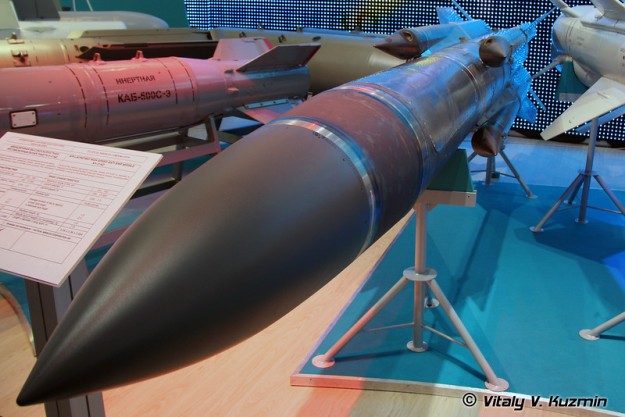
Kh-31AD airborne anti-ship guided missile is designed for hitting combat (assault landing) surface ships and cargo ships from the striking force (convoys) and single ships. This particular missile has a warhead power increased to 15% in compare with its prototype Kh-31A. Launch range is increased up to 120-160 km almost in two times.
Performance:
| Maximum launch range | |
| (carrier flight parameters: H=15 km, M=1.5 km), km | 120 to 160 |
| Launch altitrudes, km | 0,1 to 15 |
| Launch speeds (M number) | 0,65 to 1,5 |
| Aiming system | inertial + active radio homing head |
| Active radio homing head angle of sight in vertical plane, degree | +10 to -20 |
| Active radio homing head angle of sight in horizontal plane, degree | up to +/-27 |
| Warhead: | |
| type | universal |
| weight, kg | 110 |
| Fuel | gasoline |
| Missile start weight (maximum), kg | 715 |
| Lengthxdiameter, m | 5,340×0,360 |
| Weather conditions for use | any conditions at sea roughness |
| up to 4-5 | |
| Carriers | aircrafts Su-30MK (MKI, MKM, MK2), |
| Su-35, Mig-29K, Mig-29KUB, Mig-35 | |
| and etc. | |
| Average number of missile hits required to make enemy’s destroyer | |
| ineffective | 2,0 |
Kh-31PD airborne high speed anti-radar missile

Kh-31PD airborne high speed anti-radar missile is designed to hit radars of anti-aircraft missile stations (ZRK).
Missile ground maintenance is provided by the OKA-E-1 aircraft guided weapons (AUSP) preparation system.
Performance:
| Maximum launch range, km | |
| (carrier flight parameters H=15km, M=1,5), km | 180 to 250 |
| Maximum launch range (H=0,1km), km | 15 |
| Launch altitudes, km | 0,1 to 15 |
| Launch speeds (M number) | 0,65 to 1,5 |
| Aiming system | inertial + wide waveband range |
| passive radio homing head | |
| Target location angle when launching, degree | |
| target lock being under carrier | +/-15 |
| target lock at the trajectory | +/-30 |
| Warhead: | |
| type | cluster, universal |
| weight | 110 |
| Fuel | gasoline |
| Missile start weight (maximum), kg | 715 |
| Missile overall dimensions: | |
| lengthxdiameterxwing span, m | 5,340×0,360×0,954 (1,102) |
| Weather conditions | any weather conditions |
| Carriers | aircraft Su-30MK (MKI, MKM, MK2), |
| Su-35, Mig-29, Mig-35, Mig-29KUB and etc. |
Source ktrv.ru
Novator RVV-L / R-172 / K-100
The R-172, previously designated the KS-172, is a departure from the established focus of Novator, designers of the S-300V (SA-12) system’s long range SAMs. Like the R-37, the R-172 was developed as an ‘AWACS killer’. The missile employs an active radar seeker and inertial midcourse guidance. Two configurations are known, with and without a booster pack. With the booster the missile is claimed to achieve a range of 215 NMI, without 160 NMI. Cited seeker performance is similar to the R-37.
While the R-172 is less mature than the R-37, India has recently negotiated an arrangement to fund final development and licence produce the weapon, not unlike the extant deal to licence the Yakhont as the BrahMos. Source ausairpower.net
 Image: ausairpower.net
Image: ausairpower.net
| Specifications | |
| Weight | 748 kg (1,650 lb) (KS–172) |
| Length | 6.01 m (19.7 ft) + 1.4 m (4.6 ft) (KS–172) |
| Diameter | 40 cm (16 in) (KS–172) |
| Warhead | HE fragmentation (KS–172) |
| Warhead weight | 50 kg (110 lb) |
| Engine | Solid-propellant tandem rocket booster (KS–172) |
| Wingspan | 61 cm (24 in) (KS–172) |
| Operational
range |
At least 200 km, possibly 300–400 km (160–210 nmi) |
| Flight altitude | 3 m (9.8 ft)–30,000 m (98,000 ft) (KS–172) |
| Speed | 4,000 km/h (2,500 mph; 1.1 km/s; Mach 3.3) (KS–172) |
| Guidance
system |
inertial navigation with midcourse guidance and terminal active radar homing (KS–172) |
| Launch
platform |
Su-27, Su-30, Su-35, Su-30MK, PAK FA (expected) |
Specification wikiwand.com
 Image: ausairpower.net
Image: ausairpower.net
Kh-58UShK (AS-11 “Kilter”) anti-radiation missile
 Kh-58UShK (AS-11 “Kilter”) anti-radiation missile (wings extended)
Kh-58UShK (AS-11 “Kilter”) anti-radiation missile (wings extended)
The Kh-58 (Russian: Х-58; NATO:AS-11 ‘Kilter’) is a Soviet anti-radiation missile with a range of 120 km. As of 2004 the Kh-58U variant was still the primary anti-radiation missile of Russia and its allies. It is being superseded by the Kh-31. The NATO reporting name is “Kilter”, after a pixie in the 1902 book The Life and Adventures of Santa Claus by L. Frank Baum.
It was designed to be used in conjunction with the Su-24’s L-086A “Fantasmagoria A” or L-086B “Fantasmagoria B” target acquisition system. The range achieved depends heavily on the launch altitude, thus the original Kh-58 has a range of 36 km from low level, 120 km from 10,000 m (32,800 ft), and 160 km from 15,000 m (49,200 ft).
Like other Soviet missiles of the time, the Kh-58 could be fitted with a range of seeker heads designed to target specific air defence radars such as MIM-14 Nike-Hercules or MIM-104 Patriot.
The Kh-58 was deployed in 1982 on the Su-24M ‘Fencer D’ in Soviet service. The Kh-58U entered service in 1991 on the Su-24M and Mig-25BM ‘Foxbat-F’. The Kh-58E version can be carried on the Su-22M4 and Su-25TK as well, whilst the Kh-58UshE appears to be intended for Chinese Su-30MKK’s.
Variants
- Kh-58 (Izdeliye 112) – original version for the Su-24M
- Kh-58U – improved version with longer range and lock-on-after-launch
- Kh-58E – export version first offered in 1991 a downgraded Kh-58U
- Kh-58EM – another version offered for export in the 1990s
- Kh-58UShE (Uluchshennaya Shirokopolosnaya Exportnaya : ‘improved, wideband, export’) – new wideband seeker in new radome, intended for Su-30
- Kh-58UShKE – version shown at MAKS 2007 with folding fins for internal carriage in the Sukhoi PAK FA.
- Kh-58UShKE(TP) – version shown at MAKS 2015 with an added IIR UV seeker.
Some Western sources have referred to a Kh-58A that is either optimised for naval radars or has an active seeker head for use as an anti-shipping missile – it probably represents another name for the Kh-58U. Source revolvy.com
The Su-35 anti-ship missiles include Kh-31A (see above), the long-range Kh-59MK (AS-18 Kazoo), the long-range Kalibr and the NPO Mashinostroenia heavy long-range Yakhont missile.
 DarthWelder Channel
DarthWelder Channel
Kh-59MK/MK2 / AS-18 Kazoo
The Kh-59MK2 was developed with PLA-N funding to arm the Su-30MK2 Flanker G variant delivered to PLA-N naval strike wings. It has since been offered for export to other clients, in competition with the Kh-25E/UE Switchblade.
 Kh-59MK2 / AS-18 Kazoo anti-shipping variant – Image: ausairpower.net
Kh-59MK2 / AS-18 Kazoo anti-shipping variant – Image: ausairpower.net
The design changes are substantial, with the original folding high aspect ratio canards replaced by a strake like cruciform canard stabiliser. The electro-optical seeker is completely replaced with a new Radar MMS developed ARGS-59E active radar seeker designed for attacks on shipping or other high radar contrast targets. Stated range performance for this variant is 285 km. The missile is fitted with a KTRV-Detal A-079E radar altimeter.
| Основные тактико-технические характеристики Х-59МК | |
| Максимальная дальность, км | |
| по цели типа «эсминец», «крейсер» | 285 |
| по цели типа «катер» | 145 |
| Минимальная дальность, км | 5…25 |
| Режимы пуска ракеты: | |
| диапазон скоростей полёта носителя при пуске, км/ч | 600…1100 |
| число М | 0,5…0,9 |
| диапазон высот полета носителя, км | 0,2…11 |
| Скорость полета ракеты, км/ч | 900…1050 |
| Высота полета ракеты,м | |
| На марше (над водной поверхностью) | 10…15 |
| В районе цели | 4…7 |
| Стартовая масса ракеты, кг | не более 930 |
| Боевая часть | проникающего типа |
| Масса боевой части, кг | 320 |
| Габаритные размеры, м | |
| длина корпуса | 5,7 |
| размах крыла | 1,3 |
| диаметр основного корпуса (без двигателя) / носовой части | 0,38 / 0,42 |
Source ausairpower.net
Χ-59ME (Kh-59 ME)

The Kh-59 is a standoff, air-launched, air-to-surface weapon designed to engage ground and surface targets with pinpoint accuracy in optimal weather conditions. Its guidance system consists of an automatic navigation and control system which takes the weapon to the target’s area. A nose-mounted TV-sensor relays target area imagery to the launch airborne platform and the pilot selects the impact point. A bi-directional data link allows the pilot to select the impact point and re-target with the missile already in flight. The Kh-59 was introduced as the the Soviet counterpart to US SLAM standoff missile in the 1980s.
The Kh-59ME is an improved version of the Kh-59 standoff missile and was introduced in the early 1990s. It features two larger fragmentation and penetration warheads, minor airframe changes, and a new propulsion system for extended range. The missile can fly at altitudes between 7 and 1,000 meters. The nose-mounted TV-sensor relays target area imagery to the launch airborne platform and the pilot selects the impact point using the aircraft-mounted APK-9ME pod. The Kh-59ME improved standoff weapon has been integrated on Russian tactical attack aircraft such as the Mig-27 and Su-24. Source deagel.com
36MT turbofan engine
Design features
- 1-stage fan
- axial-diagonal high pressure compressor
- annular combustor
- 1-stage high pressure turbine
- 1-stage low pressure turbine
Specification
| Engine | 36МТ |
| Thrust at maximum rating, kgf | 450 |
| Maximum length, mm | 850 |
| Maximum diameter, mm | 330 |
| Weight, kg | <100 |
Source 36МТ npo-saturn.ru
| Design Bureau | “Raduga” |
| Launch altitude, m | 200-5.000 |
| Launch speed, km/h | 600-1.100 |
| Max launch range, km | 115 |
| Cruising altitude, km | 0,007 (sea)0,05, 0,1, 0,2, 0,6, 1 |
| Mach number | 0,72-0,88 |
| Warhead | Penetration or cluster |
| Guidance accuracy (CEP), m | |
| manual mode | 2-3 |
| automatic mode | 5-7 |
| Communications range, km | 140 |
| Launch weight, kg | 930 |
| Length, m | 5,7 |
| Wing span, m | 1,3 |
| Warhead weight, kg: | |
| – penetration WH | 320 |
| – cluster WH | 280 |
| Body diameter, m | 0,38 |
| Pod weight, kg | 260 |
| Pod length, m | 4,0 |
| Pod diameter, m | 0,45 |
Technical data redstar.gr
Kh-35U Anti-Ship Missile Added to Russian Su-35S Fighters Weapon Suite: Here
Excerpt
The Su-35S fighter jets of the Aerospace Forces (VKS) will be able to destroy naval targets of various classes, as well as ground objects, owing to the Kh-35U anti-ship missiles (ASM). The ASM has been officially introduced to the armament suite of the Su-35S after trials. Therefore, the fighters will be multifunctional platforms, being able to accomplish a wide range of tasks, according to the Izvestia newspaper.
Kh-35UE anti-ship missile

The Kh-35UE is a subsonic, sea-skimming anti-ship missile designed to engage amphibious assault ships and cargo vessels navigating individually or as part of a convoy from longer ranges than the basic Kh-35 missile. Like its predecessor, the new missile can be released from both fixed- and rotary-wing aircraft. The helicopter version is longer and heavier than the airplane version (4.4 meters versus 3.85 meters and 650 kg versus 550 kg) but can be released at lower altitudes (100-3,500 meters) and airspeeds (0-0.25 Mach). The guidance system has been improved to make the missile system more effective against advanced targets.
The Kh-35UE features an improved propulsion system which doubles the effective range of the cruise missile from 130 km to up to 260 km. It features a high-precision radio-altimeter and an active radar guidance system in the terminal phase of the flight. During the flight the Kh-35UE missile depends on the radio-altimeter and the Inertial Navigation System (INS). It is fitted with a 145 High Explosive (HE) fragmentation, penetration warhead.
Number of Stages: 2
Dimensions
Diameter: 0.42 meter
Length: 3.85 meter (12.6 foot)
Wingspan: 1.33 meter
Performance
Max Launch Altitude: 10,000 meter
Max Range: 260 kilometer (140 nautical mile)
Min Launch Altitude: 200 meter
Min Range: 7 kilometer
Speed
Cruise Speed: 0.80 mach (956 kph)
Max Launch Airspeed: 0.90 mach (1,076 kph)
Min Launch Airspeed: 0.35 mach (418 kph)
Weight
Warhead: 145 kilogram (320 pound)
Weight: 550 kilogram
Source deagel.com
Sukhoi-30 SM/M2 & Su-34/35S may get Mach 10 hypersonic air-to-surface missile Knizhal
Grom tactical air-to-ground missile
APK-9 datalink pod for the Kh-59ME
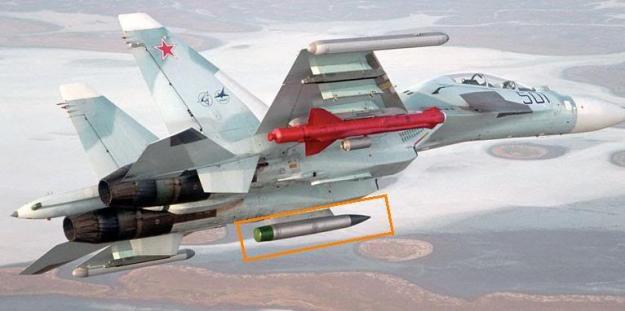 Kh-59ME Ovod M / AS-18 Kazoo and APK-9 Tekon pod on Su-30MK (KnAAPO image). – Image: ausairpower.net
Kh-59ME Ovod M / AS-18 Kazoo and APK-9 Tekon pod on Su-30MK (KnAAPO image). – Image: ausairpower.net APK-9 Tekon pod –Image : ausairpower.net
APK-9 Tekon pod –Image : ausairpower.net
Ordnance
The Su-35 can be armed with a range of guided bombs, including the KAB-500Kr TV-guided bomb, KAB-500S-E satellite-guided bomb, LGB-250 laser-guided bomb, Kab-1500Kr TV-guided bomb and KAB-1500LG laser-guided bomb.
FAB-250 250-kilogram (550 lb) unguided bombs

KAB-500L laser-guided bomb
 KAB-500L laser-guided bomb – ausairpower.net
KAB-500L laser-guided bomb – ausairpower.net
The KAB-500L is the baseline laser semi-active homing 500 kg guided bomb developed for the FA-VVS and widely exported since the end of the Cold War. It achieved IOC in 1979.
The weapon uses the Azov 27N or later 27N1 semi-active laser homing seeker using an annular airfoil and optical design similar to the Paveway I/II series. It will provide similar characteristics to the baseline Paveway I/II seeker. The cited CEP is 7 to 10 metres which is consistent with this style of seeker and the bang-bang control loop technology involved.
Delivery envelope is 1 to 15 km AGL and 550 – 1700 km/h. Source ausairpower.net
KAB-1500 laser-guided bomb
 KAB-1500 laser-guided bomb
KAB-1500 laser-guided bomb
The KAB-1500L, KAB-1500LG-F-E is the current production standard, is a 1,500 kg, laser-guided bomb designed to hit stationary ground and surface targets when used by the latest generation of Russian-made fighters and bombers. It is the Russian counterpart to United States Paveway II/III laser-guided bombs. Once released, the pilot or a third party must aim at the target with a laser designator in order to successfully direct the KAB bomb. The KAB-1500LG-F-E features an impact fuze with three delay modes.
The KAB-1500L bombs were deployed successfully during the Russian military campaign in Chechnya. Usually, the Su-24 Fencer and Mig-27 Flogger aircraft use this type of weapon in strike missions but can be used by the latest generation of Su-30MK multirole aircraft. The spectrum of targets to hit by this weapon include: railway and highway bridges, military and industrial facilities, ships and transport vessels, ammunition depots and railway terminals. Source deagel.com
Developer and manufacturer: GNPP “Region”
Performance:
| KAB-1500LG-Pr-E | KAB-1500LG-F-E | KAB-1500LG-OD-E | |
| Weight, kg | |||
| (total/warhead/explosive) | 1525/1120/210 | 1525/1120/440 | 1450/1170/650 |
| Dimensions, m: | |||
| length | 4,28 | 4,28 | 4,24 |
| diameter | 0,58 | 0,58 | 0,58 |
| wingspan | 0,85 (retracted) | 0,85 (retracted) | 0,85 (retracted) |
| 1,3 (extended) | 1,3 (extended) | 1,3 (extended) | |
| Drop altitude, km | 1 to 8 | 1 to 8 | 1 to 10 |
| Aircraft drop speed, km/h | 550 to 1100 | 550 to 1100 | 550 to 1100 |
| Aiming accuracy, m | 4 to 7 | 4 to 7 | 4 to 7 |
| Warhead | penetrating | high explosive | full air explosive |
| Type of blasting device | contact with three | contact with three | direct action contact |
| types of delay | types of delay |
Source ktrv.ru
The aircraft can also be armed with 80mm, 122mm, 266mm and 420mm rockets.
Rockets
S-8 rocket pod

‘S-8’ 80mm unguided rocket

The S-8 system is the main caliber weapon in the class of unguided aircraft rockets and can solve a variety of aircraft missions.
The rocket is provided with a solid propellant motor with a summary thrust pulse of 5,800 N.s and operating time of 0.7 s. Progressive methods for body shaping from ready-made rolled aluminum and unique engineering solutions in terms of separate elements aimed at reducing motor manufacturing labor consumption and costs are used in its construction.
The following types of S-8 rockets are operational today:
-
- S-8KOM with HEAT fragmentation warhead;
- S-8BM with concrete-piercing (penetrating) warhead;
- S-8-OM with illuminating warhead.
Weapon |
Type |
Guidance |
Range (km) |
Warhead (kg) |
Weight (kg) |
Speed (km/h) |
Intended Targets |
S-8KOM |
80 mm unguided aircraft rocket |
Unguided |
1.3-4 |
3,6 |
11.3 (pod 386) |
2196 |
20 x AT Fragmentation Rocket ,(400mm penetration) light anti-armor. This rocket is intended to engage modern tanks, lightly armored and soft-skinned combat materiel. Owing to the fragmentation effect, the rocket also inflicts damage on manpower |
S-8OFP2 |
80 mm unguided aircraft rocket |
Unguided |
6-7 |
9.2 |
16.7 (pod 402) |
– |
20 x HE Fragmentation Rocket , This rocket is designed to engage personnel, soft and lightly armored targets. |
S-8TsM |
80 mm unguided aircraft rocket |
Unguided |
1.3-3 |
3.6 |
11.1 (pod 382) |
– |
20 x Smoke, This rocket is intended to mark ground targets, routes of movement and landing areas in daytime. |
Source steamcommunity.com
B-13 unguided S-13 rocket pods

The S-13 is a 122 mm calibre unguided rocket weapon developed by the Soviet Air Force for use by military aircraft. It remains in service with the Russian Air Force and some other countries.
The S-13 rocket was developed in the 1970s to meet requirements for a penetrating weapon capable of cratering runways and penetrating hardened aircraft shelters, bunkers and pillboxes, to fill a gap between 80 mm and 240 mm rockets and fulfill a role similar to the 127 mm Zuni rocket. The S-13 is conventional in layout, with a solid rocket motor and folding tail fins that provide stability after launch.
The first trials were in 1973, but it was introduced only in 1983. S-13 rockets are shot from 5-tube launchers B-13L, that can be carried by most of Soviet and Russian attack and new fighter aircraft, like Su-17/20/22,Su-24, Su-25, Su-27, MiG-23BN, MiG-27, MiG-29. B-13L1 launcher is used by helicopters, like Mil Mi-24, Mil Mi-28, Ka-29TB, Ka-50, Ka-52.
S-13 rocket

Source su-27flanker.com
S-25L laser-guided rocket

Weapon |
Type |
Guidance |
Range(km) |
Warhead (kg) |
Weight (kg) |
Speed |
Intended Targets |
S-25L |
340 mm laser guided aircraft rocket |
Semi-Active Laser |
3 |
190 |
480 |
2520 km/h |
Soft targets, concrete targets |
Source steamcommunity.com
S-25 OFM-PU air-to-ground rocket

The S-25 is a Russian air-to-ground rocket launched from aircraft. It is launched from the O-25 pod which can hold one rocket.
S-25-OFM for use against hardened targets
Weapon |
Type |
Guidance |
Range (km) |
Warhead (kg) |
Weight (kg) |
Speed (km/h) |
Intended Targets |
S-25OFM |
340 mm unguided aircraft rocket |
Unguided |
3 |
190 |
480 |
2520 |
1 x Ultra heavy FFAR(folding-fin-aerial-rocket) HE ,soft targets, concrete targets |
Source steamcommunity.com
Guns
 30 mm GSh-301 internal cannon with 150 rounds
30 mm GSh-301 internal cannon with 150 rounds
The Gryazev-Shipunov 30mm GSh-30-1 gun is fitted in the starboard wing root with 150 rounds of ammunition.
GSh-301 30mm cannon

The Gryazev-Shipunov GSh-30 (ГШ-30) is a family of autocannons used on certain Russian military aircraft.
The GSh-30-1 (also known as “GSh-301”) is the standard cannon armament of most modern Russian fighters including the Yak-141 Freestyle, MiG-29 Fulcrum, Su-27 Flanker and its’ various derivatives. The GSh-30-2 is carried by the Sukhoi Su-25 Frogfoot ground attack plane and in external gun pods. The GSh-30-2K is a modified version with 2400mm long water-cooled barrels and variable rate of fire. It is used on a fixed mounting on Mi-24P Hind-F helicopters.
Gryazev-Shipunov GSh-30-1
- Caliber: 30x165mm
- Operaton: Gast principle
- Length: 1978mm
- Weight (complete): 46 kg
- Rate of fire: 1500–1800 rpm
- Muzzle velocity: 860 m/s
- Projectile weight: 386-404 g (13.6-14.25 oz)
- Mounting platforms: Yakovlev Yak-141 “Freestyle”, Mikoyan MiG-29 “Fulcrum”, Sukhoi Su-27 “Flanker” (and derivatives), Sukhoi Su-34 “Fullback”
GSh-30 Data imfdb.org
Sensors
The X-band multimode phased array Irbis-E radar is supplied by Tikhomirov Scientific-Research Institute of Instrument Design (NIIP), based in Zhukovsky. Irbis-E is a high-performance radar designed for the Su-35 aircraft.


The 900mm passive phased array antenna is mounted on a hydraulic actuator for mechanical steering. The electronic steering provides azimuthal and elevation coverage of 60°. With both mechanical and electronic scanning the coverage is 120°.

The radar can detect low-observable and stealth aircraft, unmanned air vehicles and missiles with a radar cross section of 0.01m² at ranges to 90km. Radar modes include air-to-air, air-to-ground, air-to-sea, mapping, Doppler beam and synthetic aperture radar modes. It can detect and track up to 30 airborne targets with a radar cross section (RCS) of 3m² at ranges of 400km using track-while-scan mode.
Irbis-E passive electronically scanned array radar
 Irbis-E passive electronically scanned array radar – Image: niip.ru
Irbis-E passive electronically scanned array radar – Image: niip.ru

RLSU “IRBIS-E” is a multifunctional X-band system on the base of passive antenna array with electronic beam scanning, mounted on two-degree-of-freedom drive (in azimuth and in roll), and advanced computing system. The radar control system also consists of the IFF interrogator equipment operating in Mk-XA modes and a micronavigation unit.
RLSU “IRBIS-E” provides detection, tracking and coordinate measurement of air, ground, surface targets day-and-night, under all weather conditions in the presense of natural noise and jamming.
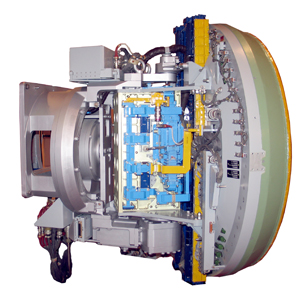
Performance characteristics
“Air-to-Air” mode:
– detection range for targets with RCS=3m2 is 350 km
Scanning zone:
– in elevation: ± 60 deg.;
– in azimuth: ± 120 deg.
The number of detected and tracked targets is 30.
The number of simultaneously fired upon air targets is up to 8.
“Air-to-Ground” mode:
– mapping in SAR (synthetic aperture radar) mode with 3 meter resolution;
– real beam mapping in DBS mode (Doppler beam sharpening);
– ground moving target selection;
– tracking of up to four ground targets;
– tracking of one ground target preserving air sector surveillance.

Application
Radar control system “IRBIS-E” is used at all stages of combat application while interacting with on-board equipment complex, as well as with complexes of on-board equipment within a group of aircraft under close and long-range air combat modes, during group and single operations day-and-night, under simple and heavy weather, over its own and the enemy territory in the presence of natural noise and jamming.
Upgrade
It was not carried out.
Rendering of service
– warranty period:
Warranty package is set by the manufacturer under the agreement with the Customer. It should provide for the warranty of Su-35 aircraft Supplier under the contract and under the supply agreement of Sh135E (Ш135Э) items to equip Su-35 aircraft.
Service life limit (lifetime) of the item should not be less than 6000 hours within 30-year lifetime.
– types of repair:
service life and lifetime before the first repair is 1500 hours, 12 years.
Overhaul life and lifetime is 1500 hours, 12 years.
Mean time to repair “IRBIS-E” item at maintenance stages (troubleshooting by means of replacement of failed units for the serviceable ones containing in SPTA) does not exceed 30 minutes.
The exact procedure of activities is defined by Operation and Maintenance Manuals for the item.
– possibility of training:
In accordance with the requirements for training equipment defined by “IRBIS-E” Technical Assignment, the development of training equipment is executed under a separate Technical Assignment issued by the Customer. The proposals on the structure of training equipment were not submitted in the technical memorandum due to the absence of a separate TA for training equipment. Source niip.ru

S-108 airborne integrated communication system and NKVS-27 ground communication systems
S-108 airborne integrated communication system
 Image: bestchinanews.com
Image: bestchinanews.com
The S-108 airborne integrated communication system and NKVS-27 ground communication systems, the communication system is Russia, a new generation of airborne communication system. Can be between aircraft for combat, combat aircraft and early warning aircraft and combat aircraft and ground instructions the between tactics operation according to the information and swap, also can be used for aircraft navigation, identification, and other functions, these functions and the United States of LINK-16 roughly.
 Image: bestchinanews.com
Image: bestchinanews.com
Also the message says S-108 communication system of probation distance can reach 1500 km, from AT-E data link terminal working frequency point of view, it belongs to the microwave frequency, wavelength is small, in the atmosphere almost in linear propagation, such aircraft flying at an altitude of 10000 meters of the hour, the spread distance should also in 500 kilometres, the 1500 km should is the distance of shortwave communication, known as lower frequency, longer wavelength, spread farther away, but the speed is low, only secure voice spread or low speed data transfer. If the hour of high-speed data transmission is limited in wireless TV distance, for example, according to the wireless TV distance formula, when the early warning aircraft and combat aircraft are in the hour at an altitude of 9000 meters, the communication distance is only 800 kilometers. To continue to extend the radio range, it is necessary to use aerial relay carrier.
Although the Russian S-108 data chain to the LINK-16 scale, but the latter is the passage of time, LINK-16 has a series of problems, such as cannot achieve dynamic network, low bandwidth, long time, long time of networking and anti destroying ability is limited, especially it adopts the omni-directional communication system, the hidden ability is poor. Is a relatively large error error for stealth aircraft, so the air force has to remove LINK-16 from the F-22 fighter configuration, instead of the “data link” between fighters -IFDL, while the F-35 is equipped with MADL data chain, as active three generation combat aircraft also intends in the LINK16 data link terminal. Equipped with TTNT module to improve the communication ability, the communication speed can reach 2M\/ greater than LINK-16 seconds.
From the point of view of domestic related unit public information, a domestic TTNT a new generation of data link has been developed, such as a space of No.513 Institute LINK-TDD-S data link terminal, from its parameters view is better than LINK-16 and S-108 data chain, has quite in the United States TTNT data chain, estimate it may be like LINK-16\/TTNT, in the military integrated data link terminal add a LINK-TDD-S module or system. Source bestchinanews.com
Ground-Based Air Communications System “NKVS-27”
 Image: npomars.com
Image: npomars.com
Designed to ensure information interaction between CPs and crews of any aircraft by means of conversations through voice communications radio networks as well as data exchange with Ka-31 AEW rotary-wing and Su-35 [Su-30] fixed-wing aircraft through data exchange radio networks. Source npomars.com
Молния Сухого поражает F-35 JSF
[SUKHOI’S LIGHTNING STRIKES THE F-35 JSF]
Air Power Australia – Australia’s Independent Defence Think Tank
Air Power Australia NOTAM
3rd September, 2007
Colonel of Aviation Grigoriy “Grisha” Medved (retd)
This time, the Sukhoi Su-35 has the new Tikhomirov NIIP IRBIS-E ESA radar and can talk to earlier model Su-30MK to pass target coordinates – like Indian Air Force Su-30MKI talks to older MiG-21 and tells when to fire its missile [Editor: This is the TKS-2 intraflight network]. Ramjet Vympel R-77M «Adder» in service for several years with long range of about 160 km. Also, some new weapons – we discuss these later.
F-35 in service from 2015 and Chuck finally understands penalty of having short arms and no punch, so redoes AIM-120 AMRAAM into the «D» model, with range of 110 km and a two-pulse motor – Americans have not yet solved ramjet drive like Russia. Still, the AIM-120D is a big improvement on old models – Americans then sell old junk to Allies to fit to Super Hornets. Not fit too many AIM-120D inside Pidgeon – some say four, others two in weapon bay. Cannot put more on pylons – all stealth is then gone and Sukhoi kills Pigeon like a Super Hornet. Also AIM-120 only have radar head [Editor: seeker]. Sukhoi have lots of shots and choose seeker head – mostly carry 8 mix R-77M with big centre tank.
We make the discussion easy – we use «DIED» kill-chain model: Detect, Identify, Engage, Destroy.
First, we detect. We ask our friends at the Russian Institute of Radio Physics and Electronicsfor the analysis of «Pigeon on Stick» radio-location reflections. They ask a very good question:«Is this US version or export version?» I say US version – if you can kill that model, export model easier to kill – much bigger radio-location reflection. We match the estimated radio-location reflection with IRBIS-E detection performance in table:
|
Aspect |
Radar Cross Section [m2] |
IRBIS-E Detection Range [km] |
Outside AIM-120D Range? |
|
Front |
0.01 |
95 |
No |
|
Side |
0.1 |
150 |
Yes |
|
Top and Bottom |
0.3 |
210 |
Yes |
|
Rear |
0.5 |
240 |
Yes |
Source : ausairpower.net
Physics colleagues say many glints as Pigeon flies and turns. Need to fire R-77M outside AIM-120D range so try to duck head-on shot. This is not so hard to do.
 Radar Cross Section measurement of JSF shape (US DoD).
Radar Cross Section measurement of JSF shape (US DoD).
Tactics are important. On fighter sweep we fly line-abreast, put two Su-35 60 km then Su-30MK 40 km more each side – see side radio reflections of Pidgeon and pass target location to shooter with best position.

Pigeon hard to see from front on X-Band radio locator, but easy to spot on other bands. Australian JORN [Editor: Jindalee HF band Over The Horizon Backscatter Radar] very good to see stealth aircraft. Also, nice irony that Lockheed Martin make stealth aircraft and radio locator to see stealth aircraft. This one called «Silent Sentry», it works using radio reflection from TV and FM radio – very good over land at low heights and out to sea about 200 km. Also«Surface Wave Radio Locator» work in HF band. Use Pigeon wingspan or body length to tune the radio locator resonance – see very well over water to 400 km distance. Can now put such a radio-location system on a ship.
Old radio locators now making a comeback. Many low frequency [Editor: VHF band], like NNIIRT NEBO series «Tall Rack», OBORONA «Tall King» and P-18-2 «Spoon Rest» see stealth airplane at 10,000 meters as far as 250 km. Rosoboronexport have on-line catalogue for these radio locators [1].
Even the Pigeon radiates – it uses APG-81 «Low Probability of Interception (LPI)» radio locator, but still makes energy pulses when it transmits. The Czechs make the «Vera-E» and the Ukrainians makes the «Kolchuga» passive radio-location systems – these track the airplane from time-of-arrival of energy pulses.

Worst part of the Pigeon is a very hot engine – 160 Celsius hotter than standard combat jet engine exhaust. It makes a very bright star in the sky and long jet plume. Russia adapted space technology for seeing ICBM launches, to air combat fighter. The OLS-35 [Editor: Infra-Red Search and Track Set] in service now, much better versions planned in next decade. Today, we see a standard fighter at about 50 km, by 2017 new technology will see Pigeon at about 150 km. Angle only measurement, but if we fly wide fighter-sweeps and pass angles to other fighters using the TKS-2 network, we can use trigonometry calculations in software to find range. Also the OLS-35 is passive – this is good.
So, Grisha advises to build multi-spectral sensors in digital network to catch the Pigeon. Then pass target location to Sukhoi fighters so they can fly close enough, where on-board sensors can detect Pidgeon.

Identifying target type is always hard. Very bad to shoot airliner, but sometimes fighters hide under body of big plane. So, we declare Air Defense Identification Zone (ADIZ) like Americans have over Washington. For commerce airplane, pass over SAM sites to get finer look. Time short for intercept, so if see airplane in ADIZ, shoot first – ask later.
Also, use logic – if we see AWACs airplane then expect fighters in airspace between AWACs and Sukhoi, divide sky up and use fine search with radio locator and infra-red sensor.
Engage when first detect. R-77M fly for about 120 seconds out to about 160 km. Problem if glint from Pigeon fade during missile flight, so expect low kill probability. Keep guidance to last point if radio reflection show again. Send a two missile package, one radar locator [Editor: seeker] and one infra-red locator. Maybe R-77M radar self guidance head makes the Pigeon turn to show its tail feathers – very bright spot for infra-red seeker. Also use imaging infra-red so pass by flares to hit plane.
This table show how close R-77M get to lock on to Pigeon:
| Aspect | Radar Cross Section [m2] | R-77 Seeker Detection [km] |
| Front | 0.01 | 3.7 |
| Side | 0.1 | 6.0 |
| Top and Bottom | 0.3 | 7.4 |
| Rear | 0.5 | 13.0 |
Source ausairpower.net
N036 Byelka radar – N036B-1-01 in the wings – N036B-1-01, 358 modules
 L-Band AESA – Image: sinodefenceforum.com
L-Band AESA – Image: sinodefenceforum.com L-Band AESA – Image: sinodefenceforum.com
L-Band AESA – Image: sinodefenceforum.com AESA geometrical field of regard, assuming a mainlobe beam steering angle of ±50° off the array boresight. Single plane monopulse precision angle tracking is feasible in the volume covered simultaneously by both arrays (Author). Image: ausairpower.net
AESA geometrical field of regard, assuming a mainlobe beam steering angle of ±50° off the array boresight. Single plane monopulse precision angle tracking is feasible in the volume covered simultaneously by both arrays (Author). Image: ausairpower.net L-Band AESA – Image: ausairpower.net
L-Band AESA – Image: ausairpower.net
| General data: | |
| Type: Radar | Altitude Max: 0 m |
| Range Max: 222.2 km | Altitude Min: 0 m |
| Range Min: 0.2 km | Generation: Late 2000s |
| Properties: Identification Friend or Foe (IFF) [Side Info], Non-Coperative Target Recognition (NCTR) – Jet Engine Modulation [Class Info], Continous Tracking Capability [Phased Array Radar], Track While Scan (TWS), Pulse Doppler Radar (Full LDSD Capability) |
| Sensors / EW: |
| Su-35S L-Band Wing Radar – Radar
Role: Radar, FCR, Air-to-Air & Air-to-Surface, Medium-Range Max Range: 222.2 km |
Su-35S L-Band Wing Radar data cmano-db.com
Infrared search and track
The infrared search and track fire control system, OLS-35 IRST, includes an infrared sensor, laser rangefinder, target designator and television camera. The accuracy of the laser rangefinder is 5m CEP (circular error probability), to a maximum range of 20km against airborne targets and 30km against ground targets. The OLS-35 is a high-performance system with ±90° azimuthal and +60°/-15° elevation coverage.
The system’s acquisition range against a non-afterburning target is 50km forwards and 90km rearward. The Su-35 can also be fitted with a UOMZ Sapsan targeting and laser designation pod.
OLS-35 optoelectronic targeting system

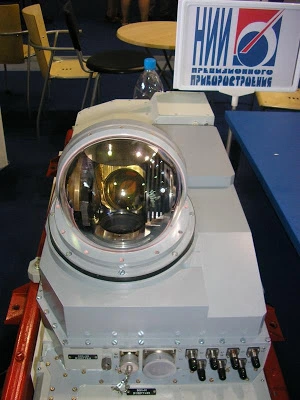
The OLS-35 is an advanced infrared search and track (IRST) fire control system designed for the 4+ generation Su-35 fighter aircraft replacing the OEPS-27 sight system. OLS-35 comprises a heat-seeker, a laser rangefinder/designator and a TV camera along with new algorithms and advanced software to outperform its predecessor installed on the Su-27/Su-30 aircraft family. The Su-35 IRST is superior to the OEPS-27 in terms of range, precision and reliability.
The OLS-35 provides a coverage of +/-90 in azimuth and +60/-15 in elevation with a target acquisition range for non-afterburning aerial targets of 50 km facing up to target’s front hemisphere and 90 km facing up to rear hemisphere. The laser rangefinder features a five-meter Circular Error Probable (CEP) and ranges up to 20 km for aerial targets and 30 km for targets on the ground. Source deagel.com
| General data: | |
| Type: Infrared | Altitude Max: 0 m |
| Range Max: 185.2 km | Altitude Min: 0 m |
| Range Min: 0 km | Generation: Infrared, 3rd Generation Imaging (2000s/2010s, Impr LANTIRN, Litening II/III, ATFLIR) |
| Properties: Identification Friend or Foe (IFF) [Side Info], Classification [Class Info] / Brilliant Weapon [Automatic Target Aquisition], Continous Tracking Capability [Visual] |
| Sensors / EW: |
| OLS-35 [IRST] – Infrared
Role: IRST, Imaging Infrared Seach and Track Max Range: 185.2 km |
*Note contradicting data from different sources but from what I understand the newer version will most likely have similar performance as in table
 Image: sukhoitributeenglish.blogspot.com
Image: sukhoitributeenglish.blogspot.com
OLS-35 [IRST] data cmano-db.com
T220 targeting pod
 T220 targeting pod
T220 targeting pod
On the website of the Moscow model-prototyping company “Guild modelers” were pictures made this company a full-size demonstration model of prospective Russian aircraft target designation pod T220 / E. The container is designed of “Scientific and Industrial Corporation” Precision Instrument Systems “(of” SPC “NGN”) and the known data, intended for equipping MiG-29 SMT, Mig-29M / M2 (MiG-35) and Su-35C. It is reported that the container has a length of 2.4 m and a diameter of 0.37 m. The model aircraft suspended container targeting T220 / e development of “Scientific and Industrial Corporation” Precision Instrument Systems “(c) www.gildmaket.ru. Translated by google – Source bmpd.livejournal.com
JSC” Scientific and Industrial Corporation “Precision Instrument Systems” – Video: Here
Excerpt
JSC” Scientific and Industrial Corporation “Precision Instrument Systems” (AO “SPC” NGN “) – the integrated structure of the Russian space industry, designed to implement a complete closed loop in development and production of precision instrument systems, including quantum-optical and opto-electronic systems.
Su-35 countermeasures
The aircraft’s electronic warfare suite includes a radar warning system, radar jammer, co-operative radar jamming system, missile approach warner, laser warner and chaff and flare dispenser.
Radar warning system
 Missile Defense System (Sensors)
Missile Defense System (Sensors)
Electro-optical reconnaissance Оптико-электронная разведка
 Detector attacking missiles (SAR)
Detector attacking missiles (SAR)
The system of optical-electronic reconnaissance (SOER)
Purpose:
• continuous review of the formation of spherical mnemo- and surroundings video?;
• automatic detection in the infrared airborne targets (VTs) and missile;
• recognition and support of the Computing Center and missiles;
• formation of signs of threat. <
Detector of attacking missiles (UAR)
Solves the following tasks:
• continuous spherical review of the environment;
• detection of objects representing a threat, determination of their angular coordinates;
• formation of signs of threat.
Detector of laser irradiation (OLO)
 OLT module
OLT module
Solves the following tasks:
• continuous spherical review of the environment;
• automatic detection of laser radiation sources (OR);
• formation of signs of threat.
Translated by google – Source npk-spp.ru
L-265V Khibiny-MV
The Russian Air Force Khibiny is an advanced aircraft-mounted electronic warfare (EW) system capable of jamming state-of-the-art radar-based weapon systems. It consists of a small torpedo-shaped wingtip pod that covers the aircraft with radio-electronic protective hood once a missile attack has been detected. The protective hood prevents the missile from reaching the target and makes it deviate from the course. According to KRET corporation the Khibiny increases the aircraft’s survivability by 25-30 times. This pod development is the result of the lessons learned during the conflict with Georgia in 2008 where all the aircraft lost were not fitted with an EW system which is the main cause of them being shot down. The Khibiny jamming system was tested successfully for some time on the ground in Buryatia, Russian Federation. The Russian Air Force plans call for the installation of the Khibiny jammer on all its advanced jets such as Su-30SM, Su-30M2, Su-34 and Su-35 (Khibiny-10V). Source deagel.com
| General data: | |
| Type: ESM | Altitude Max: 0 m |
| Range Max: 222.2 km | Altitude Min: 0 m |
| Range Min: 0 km | Generation: Late 2000s |
| Sensors / EW: |
| L-265V Khibiny-MV – (Su-35S) ESM
Role: RWR, Radar Warning Receiver Max Range: 222.2 km |
L-265V Khibiny-MV data cmano-db.com
Stealth

As mentioned earlier, Sukhoi learned that a large RCS does not help the plane, as such, to the refinement of the lines, Sukhoi allied other Stealth measures:
_ Use of RAM layers throughout the structure.
_ Treatment of the air inlets with a RAM layer with a thickness between 0.7 and 1.4 mm.
_ Treatment of the face of the engine with RAM material
_Treatment of the canopy with electro conductive materials that prevent reflection of radar waves.
These measures mean a RCS between 0.7 and 1 m2.
In terms of the thermal signature Sukhoi should have used ceramic materials in parts that reach higher temperatures, such as in the exhaust of the engine.
Source sukhoitributeenglish.blogspot.com
New Russian Su-35S Super-Maneuverability Display Wows MAKS Crowds – Video
Engines

planesawesome.tumblr.com
The aircraft is powered by two Sturn / UFA AL-31F 117S turbofan engines with thrust-vectoring nozzle control, each supplying 86.3kN thrust or 142.2kN with afterburn. The engines were developed jointly by Sukhoi, Saturn and UMPO. *Note latest engine is 117S (AL-41F1S) turbofan engines
2 x 117S (AL-41F1S) turbofan engines
 Izdeliye (Product) 117S (AL-41F1S) turbofan engines thrust output is estimated at 142 kN (31,900 lbf)
Izdeliye (Product) 117S (AL-41F1S) turbofan engines thrust output is estimated at 142 kN (31,900 lbf)
On February 19, 2008 the Su-35 aircraft powered with 117S engines successfully performed its first test flight. The specified engine performances were proved during rigorous bench and flight tests. Russian Ministry of Defence is the launch customer for Su-35.
Advantages
The 117S engine thrust has been increased by 16% (up to 14500 kgf) compared to the base AL-31FP engine, the ultimate life has been increased twice (up to 4 000 hours), keeping the same weight and overall dimensions. Such high parameters are attained thanks to application of:
• new high-tech LP compressor with increased air consumption and efficiency
• high efficiency turbine with increased reliability and improved blade cooling system
• new digital engine control system integrated to aircraft flight control system
Specification (H=0, M=0, MCA)
| ENGINE | 117S |
|---|---|
| Maximum afterburning thrust, kgf | 14 500 |
| Combat mode thrust:
• full afterburning thrust, kgf • maximum dry thrust, kgf |
14 000
8 800 |
| Ultimate service life, h | 4 000 |
Source npo-saturn.ru

Thrust vectoring nozzles
 Thrust vectoring nozzles
Thrust vectoring nozzles
TA14-130-35 APU

TA14-130-35 is a state-of-the-art gas-turbine engine with the power up to 105 kW. This engine is designed for SU-35 aircraft APU. It is used for supplying on-board AC electric power 200/115 V, up to 30 kV and providing air conditioning for cockpit and cabin.
The engine is equipped with a highly efficient turbo compressor and integrated system of oil cooling. As a result, fuel consumption and the weight are reduced.
 APU inlet in between the engines taken from front
APU inlet in between the engines taken from front
The engine is compliant with the contemporary engineering requirements and is equipped with a full-authority electronic digital control system that provides regulation, control and error detection as well as operating time count.
 APU inlet in between the engines taken from rear
APU inlet in between the engines taken from rear
Technical features:
| Absorbed electric power of AC, kVA | 30 |
| Bleed air consumption, kg/s | 0,55 |
| Bleed air pressure, kgf/sm2 | 3,70 |
| Bleed air temperature, °C | 210 |
| Start and operation altitude, m | 10000 |
| Environmental temperature, °С | ± 60 |
| Weight (without generator), kg | 62 |
| Overall dimensions, mm | 868х481х426 |
Source aerosila.ru
The total fuel capacity is 14,350l. In order to increase the unrefuelled range and endurance compared to earlier models the Su-35 incorporates additional tailfin and fin-root tanks. The fuel tanks are of aluminium lithium construction and are located in the wings, fuselage and in the square-tip twin tailfins. The unrefuelled range on internal fuel is 1,580km.

For in-flight refuelling the aircraft is equipped with a refuelling probe on the port side of the nose. Two external fuel tanks, type PTB-2000, provide an additional 4,000l of fuel. The ferry range with two external tanks is 4,500km.
Su-35 flight tests
Flight tests of the Su-35 began on 18 February 2008. During high-speed ground tests in April 2009, the third prototype of the Su-35 programme crashed at Komsomolsk-on-Armur. The crash damaged the new NIIP Irbis-E radar set installed on Su-35.
Performance
The aircraft can fly at a maximum speed of 2,390km/h. The normal and ferry ranges of the aircraft are 3,600km and 4,200km respectively. The maximum altitude is 18,000m. The Su-35 weighs around 18,400kg and the maximum take-off weight is 34,500kg.
| Performance data | |
| Aircraft length | |
| wing span (m) | 14.70 |
| length (m) | 21.9 |
| height (m) | 5.9 |
| Weight characteristics | |
| maximum fuel reserve in integral tanks (kg) | 11,3 |
| maximum take-off weight (kg) | 34,5 |
| normal take-off weight (kg) | 25,3 |
| maximum combat payload weight (kg) | 8,000 on 12 hardpoints |
| Engine’s main performance data | |
| type, model | afterburning turbofan engine, 117S |
| number | 2 |
| maximum unboosted thrust (kgf) | 2 х 8,800 |
| maximum reheated thrust (special setting) (kgf) | 2 х 14,500 |
| Performance data | |
| maximum speed near ground (km/h) | 1,4 |
| maximum Mach number at cruise altitude | 2.25 |
| practical flight range near ground (km) | 1,55 |
| practical range at cruise altitude without refueling (km) | 3,6 |
| ferry flight range with external fuel tanks (2 drop tanks 2,000 l each) (km) | 4,5 |
| service ceiling (w/o external loads) (m) | 18 |
Specification uacrussia.ru
Operators: Here
 Image: airrecognition.com
Image: airrecognition.com
Main material source airforce-technology.com
Revised Apr 19, 2017
Updated Jul 28, 2018








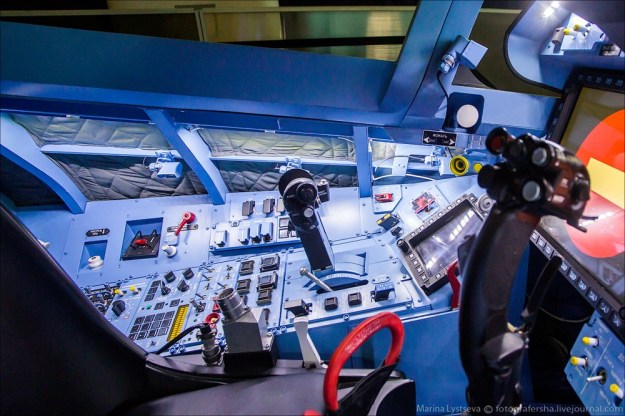









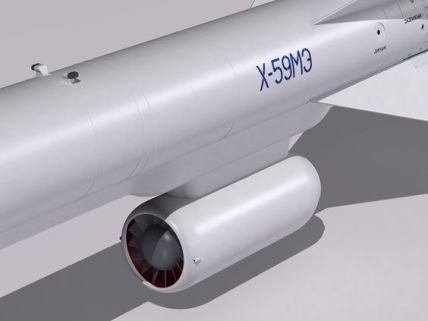



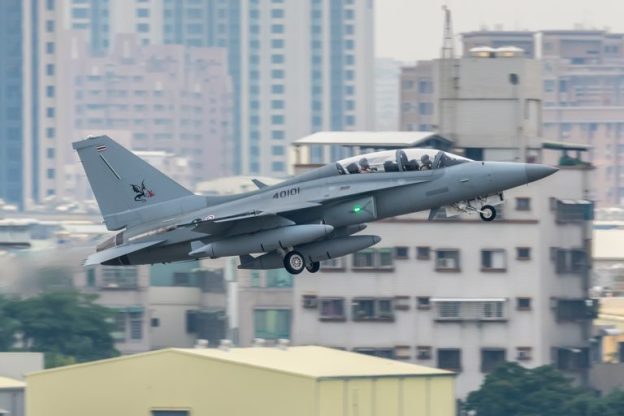


 RoKAF TA-50
RoKAF TA-50 

 Israeli EL/M-2032 pulse-Doppler radar
Israeli EL/M-2032 pulse-Doppler radar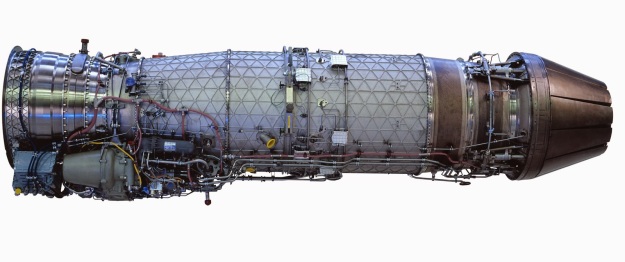 Eurojet EJ200
Eurojet EJ200 
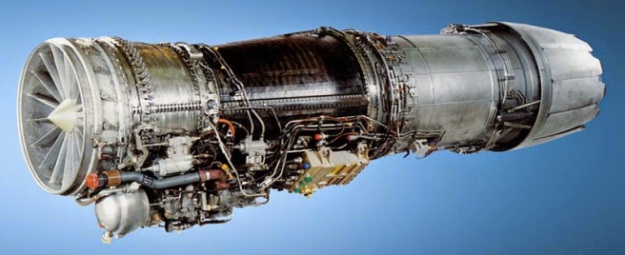 General Electric F414 turbo-fan engines
General Electric F414 turbo-fan engines Philippine Air Force FA-50
Philippine Air Force FA-50 Image: koreaaero.com
Image: koreaaero.com Indonesia T-50i
Indonesia T-50i



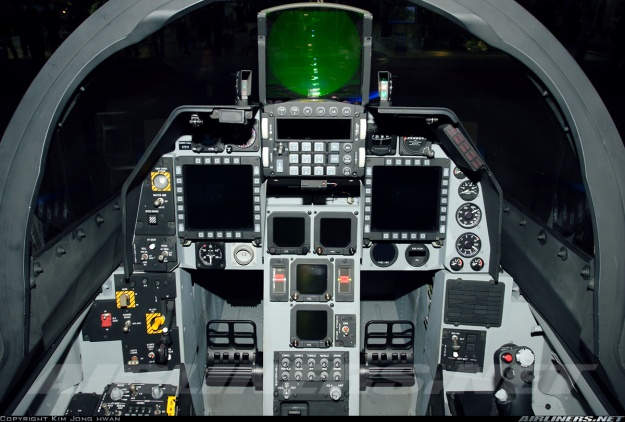
 Image: mdisimulation.weebly.com
Image: mdisimulation.weebly.com Source: mdisimulation.weebly.com
Source: mdisimulation.weebly.com
 Source: mdisimulation.weebly.com
Source: mdisimulation.weebly.com Source: mdisimulation.weebly.com
Source: mdisimulation.weebly.com Image:
Image: 
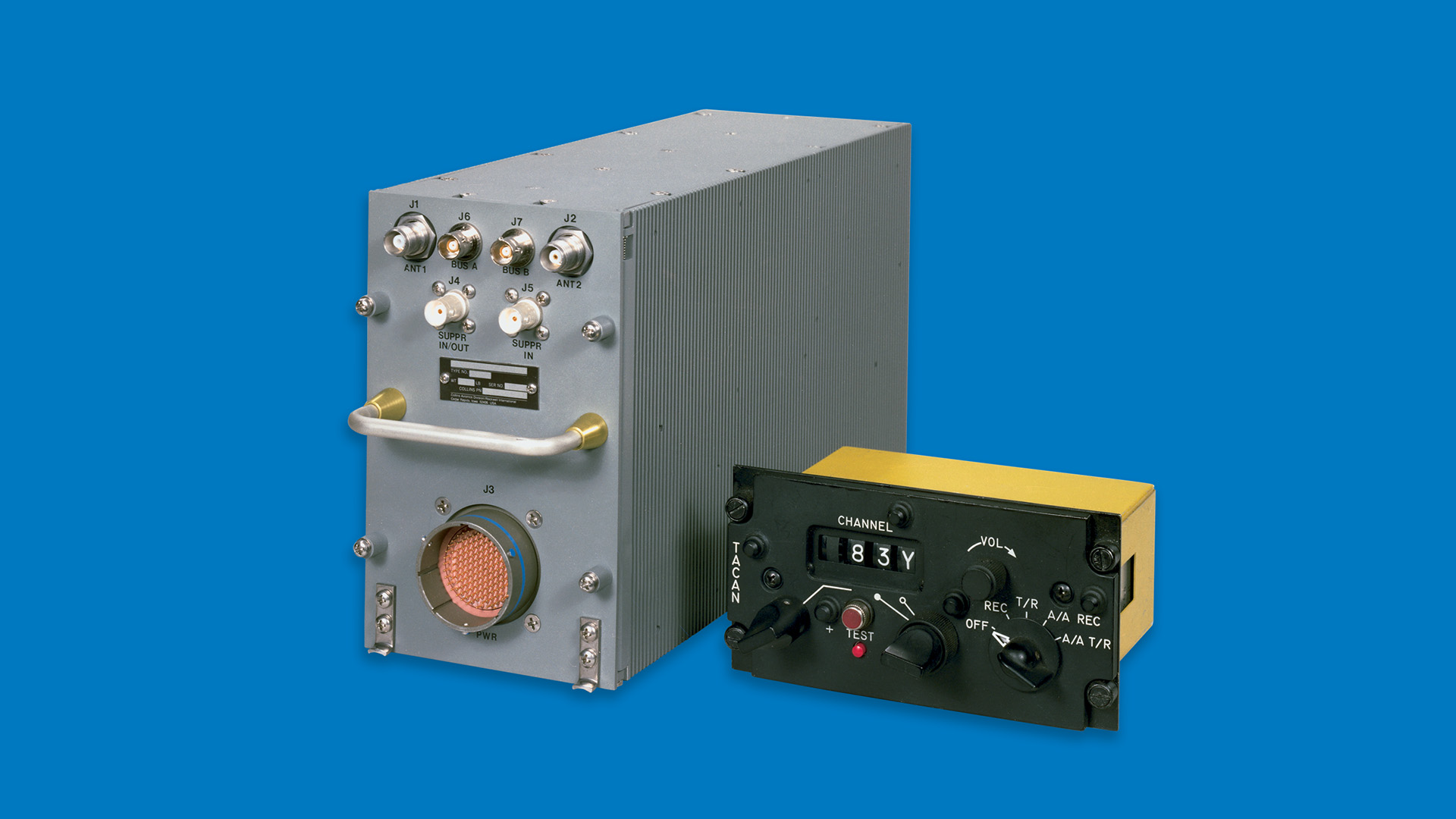



 Image: cobham.com
Image: cobham.com


 Image: defenceindustrydaily.com
Image: defenceindustrydaily.com





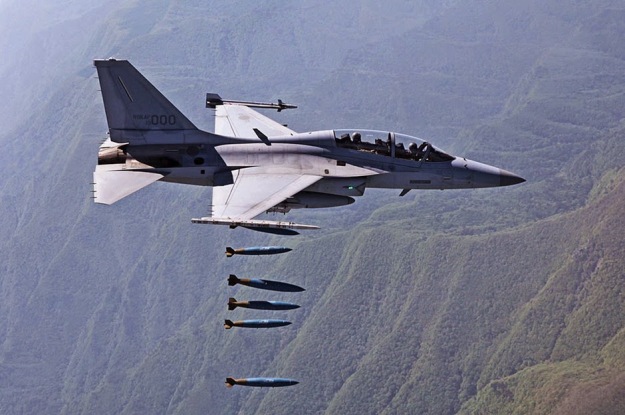

 2.75 inch (70 mm) Hydra rocket
2.75 inch (70 mm) Hydra rocket

 20 mm (0.787 in) General Dynamics A-50 3-barrel rotary cannon
20 mm (0.787 in) General Dynamics A-50 3-barrel rotary cannon


 General Electric F404 (built under license by Samsung Techwin) afterburning turbofan
General Electric F404 (built under license by Samsung Techwin) afterburning turbofan

